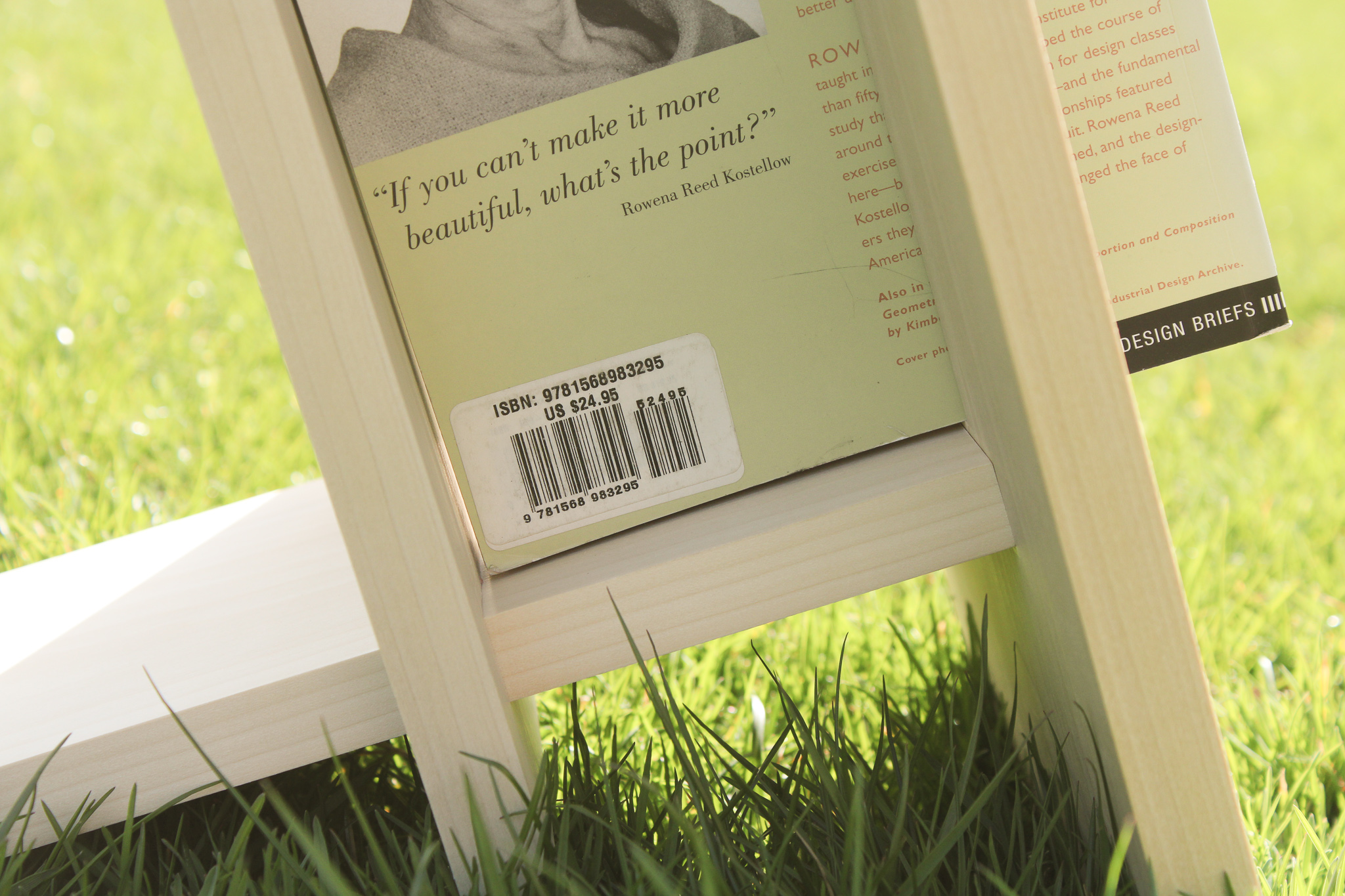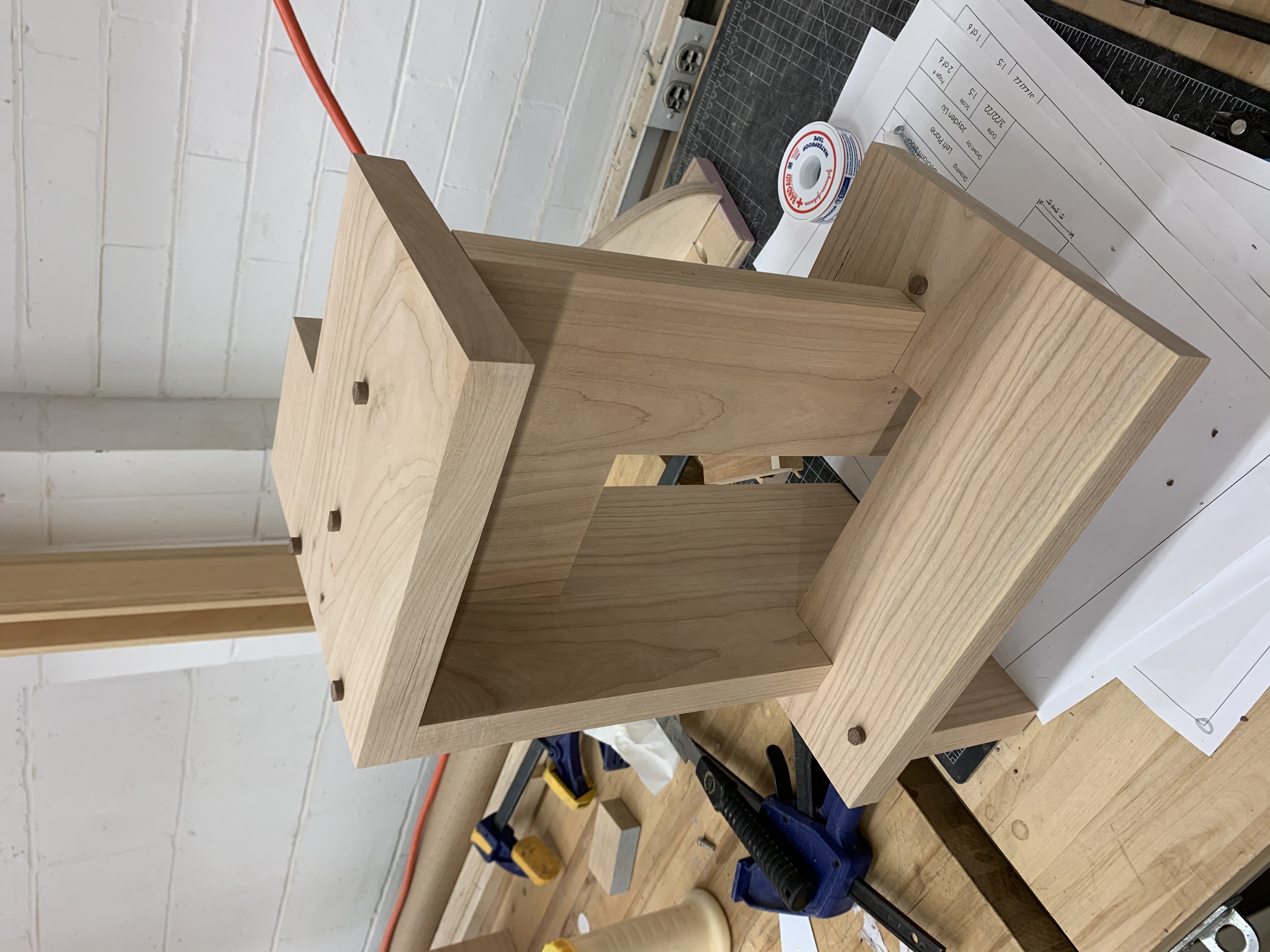Geoform Reading Stool
Wooden reading stool made from four boards cut from a single plank of poplar. To emulate the manufacturing process, we traded technical drawings of our own designs, fabricating another’s design and having our design fabricated by another. As an homage to our Industrial Design program, my stool features a slot to hold a book celebrating 80 years of ID at Carnegie Mellon University.
Collaborators
Julia LePoerJasper Krarup
Duration
4 Weeks, Spring 2021Course
Designing Products for InteractionMaterials
Poplar, Wood Screws, Wood GlueTools
Chop Saw, Joiner, Planer, Table Saw, Drill Press, Chisels, Router, Bandsaw, Soldering Iron, Power DrillWood-Working
Rapid Prototyping
CAD Technical Drawing
Design for Manufacturing







My stool, fabricated by Jasper Krarup.




Julia’s stool, which I fabricated.








